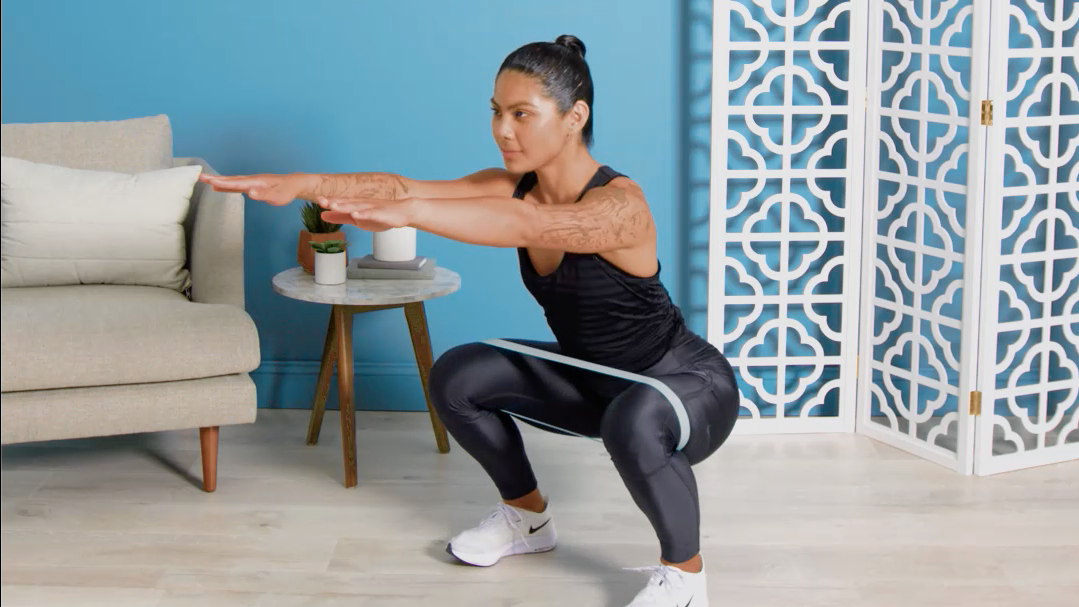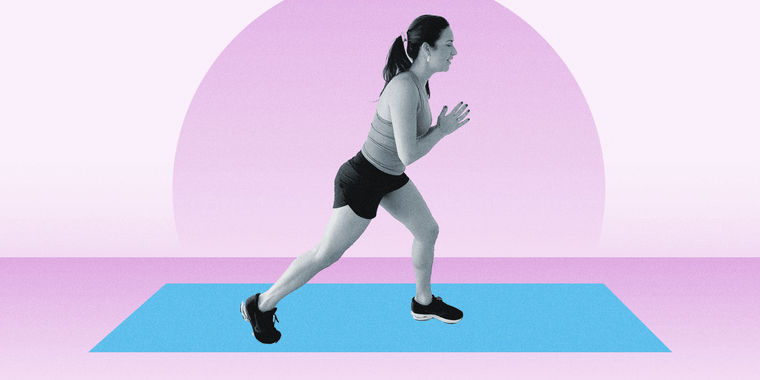Bodyweight Exercises for Hamstrings such as glute bridges, single-leg deadlifts, and hamstring curls can effectively target and strengthen your hamstrings. Hamstring strength is crucial for overall lower body stability and performance.
Whether you’re an athlete looking to improve your speed and power or simply want to tone and strengthen your legs, incorporating Bodyweight Exercises for Hamstrings into your routine can be a highly effective way to target your hamstrings. Not only do these exercises require minimal equipment, but they also allow you to work your muscles from various angles, enhancing muscle activation and providing a more well-rounded workout.
We will explore a few Bodyweight Exercises for Hamstrings that can be easily done at home or at the gym. So, let’s dive in and discover these exercises to help you achieve stronger and more defined hamstrings. Chest Workout Using Bodyweight

Bodyweight Exercises for Hamstrings
Benefits Of Bodyweight Exercises
Benefits of Bodyweight Exercises for Hamstrings :
Bodyweight Exercises for Hamstrings offer numerous advantages, making them an ideal choice for strengthening and toning the muscles at home without the need for any specialized equipment.
Convenience Of Working Out At Home
- This can be done in the comfort of your living room
- No commuting to the gym is necessary
- Flexibility to exercise at any time that suits you
Cost-effective Alternative To Gym Memberships
- No need to pay for expensive gym memberships
- Saves money on transportation costs to the gym
- Bodyweight exercises can be done with minimal or no cost
Importance Of Hamstring Strengthening
Strengthening the hamstrings is vital for overall lower body strength. Incorporating bodyweight exercises into your routine can effectively target and strengthen this muscle group, leading to improved athletic performance and reduced risk of injury.
Most Bodyweight Training Exercises are Considered Which Type of Movements
Role Of Hamstrings In Overall Leg Strength
The hamstrings, located at the back of your thighs, are a crucial muscle group that should not be overlooked in your workout routine. They play a vital role in maintaining overall leg strength, providing stability, power, and flexibility to your lower body.
A strong set of hamstrings is essential for performing various activities in Bodyweight Exercises for Hamstrings, including running, jumping, and even walking. By engaging in hamstring-strengthening exercises, you can enhance your leg strength and improve your overall athletic performance.
Prevention Of Injuries And Imbalances
Strengthening your hamstrings goes beyond just enhancing leg strength. These muscle groups play a crucial role in preventing injuries and imbalances that can occur throughout your body. When your hamstrings are weak or tight, it can lead to a disproportionate load on other muscles, causing imbalances and increasing the risk of injuries.
By regularly incorporating hamstring-strengthening exercises into your workout routine, you can minimize the chances of developing muscular imbalances that can lead to chronic pain or injuries. Properly strengthened hamstrings ensure that your legs are functioning properly and help maintain overall body balance.
Now that we understand the importance of hamstring strengthening, let’s dive into some effective bodyweight exercises that target these muscles. By incorporating these exercises into your workout routine, you can reap the benefits of strong hamstrings and improve your overall leg strength, stability, and flexibility.
Top Bodyweight Exercises For Hamstrings
The hamstrings in Bodyweight Exercises for Hamstrings are a crucial muscle group that plays a vital role in stabilizing the body and enabling various movements. To effectively target and strengthen the hamstrings without the need for equipment, bodyweight exercises are highly effective. Here are some of the top bodyweight exercises for hamstrings to incorporate into your workout routine:
Romanian Deadlifts
Romanian deadlifts are excellent for targeting the hamstrings as well as the glutes and lower back. To perform this exercise, stand with your feet hip-width apart and slowly lower the upper body by hinging at the hips while keeping the back straight. As you lower down, ensure that your knees remain slightly bent, and you feel the stretch in your hamstrings. Return to the starting position by engaging the glutes and hamstrings.
Glute-ham Raises
Glute-ham raises are a challenging yet effective bodyweight exercise for the hamstrings. Begin by kneeling on a soft surface with your feet secured under a sturdy object. Lower your upper body down while maintaining a straight posture. Engage the hamstrings to lift yourself back up to the starting position, focusing on the contraction in the hamstrings throughout the movement.
Challenges And Variations
When it comes to hamstring workouts, incorporating challenges and variations is crucial for building strength and avoiding plateaus in your fitness journey. By adapting exercises to different fitness levels and increasing intensity for progressive overload, you can effectively target and develop your hamstrings using bodyweight exercises.
Adapting Exercises To Different Fitness Levels
Bodyweight Exercises for Hamstrings can be modified to suit individuals of different fitness levels. Beginners can start with basic movements like hamstring bridges, hamstring curls, and standing leg raises. For intermediate exercisers, movements like single-leg deadlifts, sliding hamstring curls, and stability ball leg curls provide a more challenging workout. Advanced practitioners can incorporate plyometric exercises such as jumping lunges and single-leg box jumps to further intensify their hamstring training.
Increasing Intensity For Progressive Overload
To ensure continual progress in Bodyweight Exercises for Hamstrings development, it’s important to implement progressive overload. This can be achieved by increasing the difficulty of bodyweight exercises through various means. For instance, adding resistance bands to traditional bodyweight movements like leg curls and bridges can escalate the challenge. Additionally, incorporating tempo changes, such as slowing down the eccentric phase of a movement, can augment the intensity and stimulate further muscle growth. Furthermore, integrating unilateral exercises, like single-leg Romanian deadlifts, can help address strength imbalances and provide a more demanding workout for the hamstrings.
Tips For Proper Form
Looking to better your Bodyweight Exercises for Hamstrings? Proper form is crucial. Focus on keeping your back straight, engaging your core, and avoiding sudden jerky movements to prevent injury and get the most out of your workout. Paying attention to your alignment and breathing can also help bolster the effectiveness of your exercises.
Maintaining A Neutral Spine
To ensure proper form, maintain a neutral spine throughout hamstring exercises.
Avoid arching or rounding your back to prevent strain.
Focus on keeping your back straight and engage your core muscles for stability.
Engaging Hamstrings Throughout The Movement
Engage your hamstrings from start to finish in each exercise.
Focus on feeling the contraction in your hamstrings to maximize effectiveness.
Avoid relying solely on momentum and ensure controlled movements.

Bodyweight Exercises for Hamstrings
Incorporating Hamstring Workouts Into Routine
It’s essential to incorporate hamstring exercises into your workout routine to ensure a well-rounded lower-body strength program. Targeting the hamstrings through bodyweight exercises can improve stability, reduce the risk of injury, and enhance overall athletic performance.
Solar Powered AA Battery Charger Best Eco-Friendly Power in 2024
Creating A Balanced Lower Body Workout Plan
When creating a balanced lower body workout plan, it’s important to include a variety of exercises that target different muscle groups. Incorporating bodyweight hamstring exercises such as lunges, bridges, and hamstring curls can effectively engage and strengthen these muscles.
Frequency And Rest Days
Allowing adequate rest is crucial for muscle recovery and growth. Aim to include hamstring workouts 2-3 times per week, with rest days in between to maximize the benefits of the exercises. Incorporating rest days into your routine also helps prevent overtraining and decreases the risk of injury.
Monitoring Progress And Adjustments
Monitoring your progress and making necessary adjustments in Bodyweight Exercises for Hamstrings is essential for achieving optimal results with bodyweight exercises for hamstrings. By tracking your strength gains and modifying your workouts based on the results, you can continually challenge and improve your hamstring muscles. This article will guide you on how to monitor your progress and make the appropriate adjustments for an effective and efficient training routine.
Keep a record of your strength gains to track your progress and motivate yourself to push harder. Here are some ways to track your strength gains:
- Create a Workout Log: Maintain a workout log where you record the exercises, sets, reps, and the level of difficulty or resistance for each exercise.
- Measure Repetition Increase: Note the number of repetitions you can perform for each exercise and observe how it improves over time.
- Track Time Under Tension: Time under tension refers to the duration your muscles are under stress during an exercise. Monitor and aim to increase this duration gradually.
- Monitor Rest Periods: Keep track of the time you rest between sets and exercises. Gradually reduce rest periods as your strength improves.
Based on the results you see from tracking your strength gains, make necessary adjustments to your workouts. Here’s how you can modify your workouts:
- Increase Resistance or Difficulty: If you are consistently achieving the target number of reps with ease, it’s time to increase the resistance or difficulty level. For example, you can try using ankle weights or progressing to a more advanced variation of the exercise.
- Add Variations: Introduce new exercises or variations to target your hamstrings from different angles. This helps prevent plateaus and keeps your workouts challenging.
- Focus on Form: Pay attention to your form during each exercise. By emphasizing proper technique, you can optimize muscle engagement and prevent injuries.
- Vary Rep Ranges: Periodically vary the rep ranges you work within. This can help stimulate muscle growth and prevent your body from adapting to a specific rep range and becoming complacent.
By consistently monitoring and adjusting your bodyweight hamstring exercises, you can ensure ongoing progress and prevent plateauing. Remember to start at a level that suits your current fitness level and gradually progress to more challenging variations or higher resistance over time. Stay dedicated and consistent, and you’ll soon see improvements in your hamstring strength and overall fitness.
Nutrition To Support Hamstring Development
For optimal hamstring development, focus on bodyweight exercises like deadlifts, glute-ham raises, and single-leg Romanian deadlifts. These exercises engage the hamstrings effectively while also improving strength, flexibility, and muscle balance. Incorporating a balanced and nutritious diet boosts energy levels for maximum performance and recovery.
Introduction:
Proper nutrition plays a significant role in supporting the development of our hamstrings. Here, we explore the importance of protein intake for muscle repair, as well as the critical aspects of recovery and hydration.
Importance Of Protein For Muscle Repair
Consuming enough protein is vital for muscle recovery and growth. It provides essential amino acids needed to repair and strengthen the hamstring muscles.
Recovery And Hydration
Adequate recovery after workouts is vital for muscle growth. Hydration also plays a key role in supporting muscle function and overall performance.

Bodyweight Exercises for Hamstrings
Frequently Asked Questions On Bodyweight Exercises For Hamstrings
What Are The Benefits Of Doing Bodyweight Exercises For Hamstrings?
Bodyweight exercises for hamstrings offer a natural and balanced approach to strengthening this muscle group without the need for equipment. By engaging multiple muscle groups, these exercises improve flexibility, stability, and overall lower body strength.
Can Bodyweight Exercises Effectively Target The Hamstrings?
Yes, bodyweight exercises are effective in targeting the hamstrings as they engage the muscles through movements like hip hinges, lunges, and single-leg exercises. These exercises place a significant load on the hamstrings, promoting strength and muscle development.
How Can Beginners Incorporate Bodyweight Exercises For Hamstrings Into Their Routine?
Beginners can start with basic exercises like glute bridges, hamstring curls, and standing leg raises. These exercises require minimal equipment and are ideal for gradually building strength and mobility in the hamstrings while minimizing the risk of injury.
Are Bodyweight Exercises For Hamstrings Suitable For All Fitness Levels?
Absolutely! Bodyweight exercises offer scalable options, making them suitable for individuals at any fitness level. Whether you’re a beginner or advanced athlete, modifications and progressions can be made to accommodate varying levels of strength and flexibility.
Conclusion
To recap, incorporating bodyweight exercises for your hamstrings is an efficient way to build strength and improve flexibility without needing any equipment. By consistently practicing exercises like the single-leg hamstring bridge, the standing leg curl, and the kneeling hamstring curl, you can target and strengthen your hamstrings effectively.
Remember to always warm up and stretch before exercising and listen to your body’s limits. Start incorporating these exercises into your fitness routine and witness the incredible benefits for your hamstring muscles.

🌿 Welcome! I’m Romana Yasmin Ayasha, deeply invested in fitness, nourishing foods, and mental health. My journey into these realms has been driven by a belief in the power of self-care and self-discovery.🏋️♂️ For me, fitness nurtures both body and soul. Whether sweating in the gym or finding peace on my yoga mat, I believe in the impact of lifestyle choices on our well-being.🧠Breaking the stigma around mental health is my mission. From mindfulness to therapy, I champion practices that nourish our inner landscape.🔍 I’m always seeking knowledge to share through evidence-based insights, practical tips, and personal stories. Let’s explore holistic health together!
